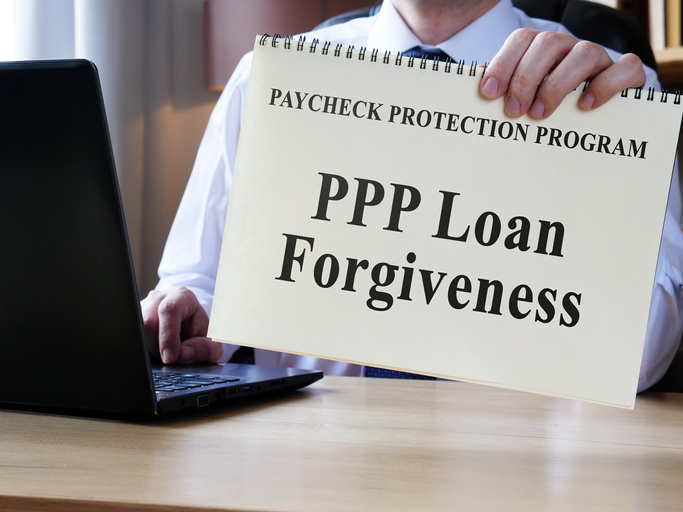 Questions about PPP loan forgiveness? Here’s the direction from us you were waiting for. On January 19th, the SBA issued an interim final rule (we love that term “interim final”) regarding PPP loan forgiveness and also issued new versions of the three forgiveness application forms, including a streamlined form for loans up to $150,000. The changes apply to original PPP loans that have not yet filed for forgiveness which, generally, we advised most clients to hold up on.
Questions about PPP loan forgiveness? Here’s the direction from us you were waiting for. On January 19th, the SBA issued an interim final rule (we love that term “interim final”) regarding PPP loan forgiveness and also issued new versions of the three forgiveness application forms, including a streamlined form for loans up to $150,000. The changes apply to original PPP loans that have not yet filed for forgiveness which, generally, we advised most clients to hold up on.
Download Printable Article (PDF)
In general, the forgiveness administration process is unchanged. After the end of the covered period, the borrower files the appropriate forgiveness application form. The form may be filed at any time prior to the last payment on the loan. If the application is filed within 10 months after the end of the covered period, payments are deferred until the forgiveness amount is determined. As provided in the Economic Aid Act, Economic Impact Disaster Loan grants are no longer deducted from the forgiveness amount. SBA reserves the right to review all applications and will deny forgiveness if it determines that the borrower is not eligible or lacked an adequate basis for its certifications in the loan application. Loans may be forgiven in whole or in part, and the borrower may challenge an adverse determination as provided in existing SBA rules.
Second draw loans are available to previous first draw (or original program) borrowers. The Economic Aid Act requires that the proceeds of the loan must be spent before the date on which the borrower receives the proceeds of the second draw loan. The implementing rules modified this to require that the first loan must have been spent only on eligible costs.
Generally, this new program has the following attributes:
1. 100% guaranteed by the SBA
2. No collateral required by the borrower
3. No personal guarantees required
4. 1% interest rate
5. 5 year maturity
6. Eligible for 100% forgiveness
7. Covered period can be 8-24 weeks, not 8 OR 24 weeks
8. Applies to businesses of 300 or fewer employees
9. Applies to businesses or self-employed individuals that experienced a 25% revenue reduction in 2020 relative to 2019 (can be determined on a quarter to quarter basis or annually – for example Quarter 4 2020 30% reduction in revenue compared to Quarter 4 2019).
10. Any forgiveness amount of a 1st Draw PPP Loan that a Borrower received in 2020 is excluded from a borrower’s gross receipts.
11. 2nd Draw PPP loan eligible only to a borrower that (a) received a 1st Draw PPP Loan, and (b) has used or will use the full amount of the 1st Draw PPP loan on or before the expected date the 2nd draw PPP loan will be disbursed.
12. Borrowers must have spent the 1st Draw on eligible expenses under the PPP rules.
13. The calculation employs 2.5x average monthly payroll (except that companies with a NAICS code beginning with “72” (Accommodation and Food Services: including most restaurants, hotels/motels, bars, caterers, etc.) can use 3.5x average monthly payroll.
14. The maximum loan amount of $2 million.
15. The average monthly payroll can be based on calendar year 2019 or 2020.
From the deluge of information and guidance we have received from the government and experts in our space, rather than re-invent the wheel, we thought the recent synopsis highlighted by our friends at the national accounting and consulting firm, Aprio, provided a clear picture of key takeaways for businesses (thank you Justin Elanjian, CPA). Contact us if you want our memo on what we think our business and self-employed clients need to know.



